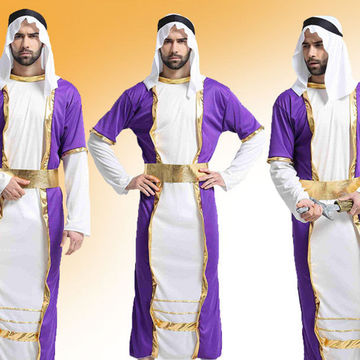Specialist Tips on Choosing the Perfect Eastern Wear Pakistan for Weddings
Specialist Tips on Choosing the Perfect Eastern Wear Pakistan for Weddings
Blog Article
Revealing the Rich Heritage of Eastern Style
Exploring the intricate tapestry of Eastern style reveals a world where tradition satisfies innovation, and workmanship links with social importance. From the extravagant silks of ancient dynasties to the intricate embroidery of nomadic people, each garment tells a tale that transcends time and boundaries, resembling the rich heritage and creative tradition of the East. As we peel back the layers of background and tradition, a fascinating trip waits for, deciphering the keys behind the captivating allure and enduring impact of Eastern style on the international phase.
Beginning of Eastern Style

In Mesopotamia, as an example, the Sumerians and Babylonians developed garments utilizing wool, linen, and leather, adorned with complex patterns and fashion jewelry. Ancient Egyptians are renowned for their sophisticated weaving abilities and using light-weight, breathable fabrics like bed linen. Chinese style highlighted the value of shade meaning and complex needlework techniques, while Indian apparel included dynamic tones, elegant materials like silk and cotton, and fancy drapery styles such as the saree.
These ancient human beings not only affected each other however additionally led the means for the varied and culturally abundant tapestry that is modern Eastern style. Via centuries of advancement, Eastern fashion proceeds to flourish, blending tradition with modern-day impacts to produce special and ageless styles.
Cultural Influences and Practices
Drawing from centuries-old customizeds and ideas, social influences and traditions play a critical function fit the significance of Eastern fashion (eastern wear pakistan). The rich tapestry of cultures throughout Eastern regions such as Asia, the Center East, and Africa has heavily influenced the clothes styles, colors, textiles, and makes that are common in Eastern fashion today
In nations like India, Japan, and China, typical garments like sarees, robes, and cheongsams remain to hold significant social significance and are frequently embellished with elaborate embroidery or symbolic patterns that mirror deep-rooted beliefs and worths. Likewise, in Middle Eastern countries, the flowing abayas and kaftans used by males and females not only function as moderate attire however also reflect the region's social heritage and Islamic practices.
Moreover, using certain colors like red permanently luck in Chinese culture or elaborate geometric patterns influenced by Islamic style better exhibit exactly how cultural impacts manifest in Eastern style - eastern wear pakistan. By recognizing and preserving these social influences and traditions, Eastern style remains to advance while staying true to its rich heritage
Development of Eastern Apparel
With time, Eastern garments have actually undertaken considerable transformations, showing a blend of custom and modernity in their style and style. Typical Eastern garments such as the saree, hanbok, bathrobe, and salwar kameez have actually website link evolved to incorporate modern elements while preserving their cultural essence.
One significant advancement is the usage of ingenious fabrics and methods in Eastern garment construction. Traditional handwoven fabrics like silk and cotton have actually been complemented with modern-day products such as polyester and blends, supplying enhanced durability and simplicity of treatment. Additionally, innovations in printing innovations have actually allowed complex patterns and styles to be included right into Eastern garments with accuracy and detail.
Moreover, changes in shape and tailoring have improved Eastern outfit, making them more flexible and appropriate for diverse occasions. Traditional gown codes have actually loosened up, permitting experimentation with designs, colors, and decorations. This advancement has not just made Eastern garments extra appealing and accessible to a global audience yet has likewise ensured their proceeded importance in contemporary style landscapes.
Significance in Eastern Clothes
Exploring the deep-rooted social value woven into Eastern clothing reveals an abundant tapestry of importance and tradition. Eastern garments are often imbued with symbols that reflect the wearer's societal condition, spiritual ideas, and social identity.
Additionally, specific garments hold symbolic meanings. Its style, material, and even the advice method it is worn all bring deep social relevance.

Influence of Eastern Style Today

The incorporation of Eastern components in Western style has resulted in a blend of styles that deal with diverse tastes and choices (eastern wear pakistan). Developers usually draw ideas from Eastern textiles, patterns, and silhouettes, creating one-of-a-kind and cutting-edge pieces that blend traditional and modern-day appearances. This cross-cultural exchange has not just revitalized the apparel industry however additionally cultivated a deeper gratitude for Eastern heritage and craftsmanship
In addition, the increase of social media and electronic systems has actually additionally amplified the influence of Eastern fashion, enabling designers and brands to reach a wider target market and showcase their cultural heritage to the world. Via collaborations, style shows, and on-line projects, Eastern fashion remains to flourish and develop in today's dynamic and interconnected worldwide landscape.
Final Thought
To conclude, the abundant heritage of Eastern style is a testimony to the social impacts, complex workmanship, and profound meaning embedded in each garment. From ancient people to modern analyses, Eastern style continues to captivate with its unique blend of custom and technology. The effect of Eastern style today works as a tip of the timeless sophistication and creative expression that have made it a global sensation celebrated for its abundant social heritage.
Discovering the complex tapestry of Eastern style unveils a world where tradition meets development, and craftsmanship links with cultural significance.The withstanding significance and social importance installed in Eastern attire continue to form and affect the contemporary effect of Eastern style today. Eastern style has actually transcended boundaries, ending up being a global phenomenon accepted by developers, celebrities, and fashion lovers worldwide.In verdict, the rich heritage of Eastern style is a testament to the cultural impacts, complex craftsmanship, and profound importance embedded in each garment. The influence of Eastern style today serves as a reminder of the ageless beauty and imaginative expression that have made it a worldwide phenomenon celebrated for its rich social heritage.
Report this page